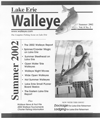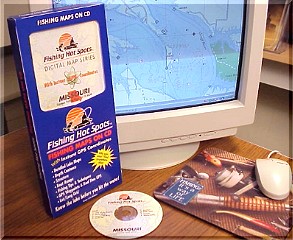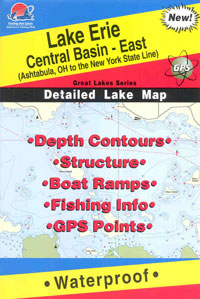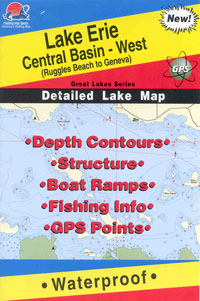The bite was slow. We had a
few nice hits but couldn’t land a fish.
We then headed to another wreck location and dropped our lines
again. It wasn’t long till I
had my hands full with a 20 pound Amberjack, which we released.
Nice fish. Again,
conditions were not conducive to bottom fishing because of the wind and
current. We then decided to
head off shore another10 miles or so to deeper water (400-500 feet) to
look for dolphin (also called Mahi-Mahi).
When dolphin fishing,
captains search for ‘weed lines’, long stretches of floating weeds
that can stretch from several
hundred yards to over a mile. They
also search for any floating debris. The
smallest flotsam whether it be a small log or plastic milk jug amazingly
can hold fish. In the open
ocean there is little cover for small fish and the smallest fish will
congregate around anything that floats.
This is the start of a food chain and at the other end of the chain
can be a large Dolphin or Sailfish.
As we moved along a
well-established weed line we were all on the lookout for floating debris
and what might lie beneath it. We
trolled using a number of presentations.
We did a fast troll (around 10 knots) using Ballyhoo and
artificials and did slow trolls (3-4 knots) and drifts using live Pilchers
for bait.
While trolling we ran four rods, two off the back and two off the
outriggers. We were trolling
for about 2 hours when we got our first hit, a small ‘schoolie’
dolphin. Then all heck broke
loose with 4 schoolies hooked up at the same time.
Anne mentioned that it’s like a ‘Chinese fire drill’ when you
get into a school of small dolphin. Boy
it was fun. While the fish
were around us, the captain threw in a handful of Pilchers for chum and
we kept one schoolie dolphin on the hook swimming beneath the boat to
attract more fish.
The next 10 minutes was fast and
furious, with a dozen or so hookups and landing 6 dolphin in the boat.
Then, just as quickly as it began, the fish had moved on.
These small dolphin run in large schools.
When dolphin reach maturity they normally travel in single pairs.
We were hoping to find a large bull or cow dolphin but it wasn’t
to be on this day.
After our run-in with the dolphins we headed back for port.
Back at the dock, we chatted while Bob cleaned our fish.
Captain Brown has been chartering in the
Florida Keys
since 1980.
He normally heads south from
Lake Erie
in November trailering his 29’ Stamas,
and excellent sized fishing boat for
Florida
waters.
He typically will run 150 or more trips in the winter and early
spring season, sometimes running two half-day Tarpon trips each day.
This works well as Tarpon fishing is best both early in the day and
late in the early evening (Dawn & Dusk Fishing).
Captain Brown offers ‘reef/wreck’ bottom fishing where he will fish
off of the shallow reefs as well as off the deeper reefs and wrecks in
waters up to 200’ feet in depth. There
he targets Grouper, Snapper, Amberjacks and other bottom fish.
He fishes mostly live-bait including Pinfish, Pilchards, Ballyhoo
and Mullet. Cut bait Squid and
Shrimp are also used.
His offshore fishing targets Sailfish, Dolphin, Wahoo, Kingfish, Tuna and
an occasional Marlin hook-up. Trolling
baits include Ballyhoo and artificials, mostly soft plastic squid.
The
Marathon
area offers some of the best fishing in the Keys because of the close
proximity of deep water to the shallow reefs.
There is a shelf that runs along the reefs that quickly drops off
in depth. You can go from 20
feet of water to 250 of water in only a few minutes of running.
Many species of both bottom and offshore fish run along this shelf
and it’s within easy range for the fishermen.
Sundance Charters run $550 for a full 8 hour trip and $375 for half-day
trips. Tarpon fishing is
priced at $350.00. Captain
Brown’s and first mate Anne’s customers are typically couples or
families. Usually 2-4
customers are on board a single trip.
He doesn’t run the typical ‘6-pack’ charters one sees on
Lake Erie
in the summer-time. Captain Brown will
clean your fish and freeze them for you, should you wish to take some back
home.
As we were leaving the dock and heading for the 7-mile Grille for dinner I
asked Captain Brown when he would be heading back north.
He mentioned that his last
Florida
charter was the second weekend in May and
his first Lake Erie Charter was the following week and that he was going
to have to hustle back for that first trip.
No rest for the weary, I guess.
At Captain Brown’s
suggestion we headed back over to the 7-mile Grille where they prepared
our dolphin (Mahi Mahi) catch. What
a deal. They cooked our fish
to our liking (baked, fried or blackened) and included all the sides for
only $8.00. You can’t beat
that. Some diners will do this
and others will not, citing health regulations and insurance issues.
After dinner we checked in at our
second accommodation, the White Sands Inn.
The following day we headed down to
Key West
(a short 50 mile jaunt) for a day of sight
seeing. We had breakfast just
a block from the Ernest Hemingway House at a place appropriately names
Ernest’s Diner. After taking
in the sites, we headed back for a relaxing final day.
Monday would mean back to work!
When visiting
Key West
I suggest you go early in the morning,
before the masses arrive.
Key West
is ‘bumper to bumper’ cars any day of
the week in the afternoon and it gets really hectic in the early evening
as people from everywhere go to watch the famous sunset.
My wife and I agreed that we would beat the crowds and enjoy the
sunset from Marathon Key. The
views are just as nice there with a few thousand fewer people!
Tired of the winter
fishing blues? Then head on
down to the
Florida Keys
. You’re
likely to experience some of the best fishing in the world!
If you want to fish with Captain Bob Brown of Sundance Charters
travel between December and Early May.
If you arrive in late May you’ll miss him as he’ll be tackling
walleyes on
Lake Erie
by that time!
You can contact Sundance Charters by
visiting their web site at www.sundancesportfishing.com
or by calling (800) 282-1712.











